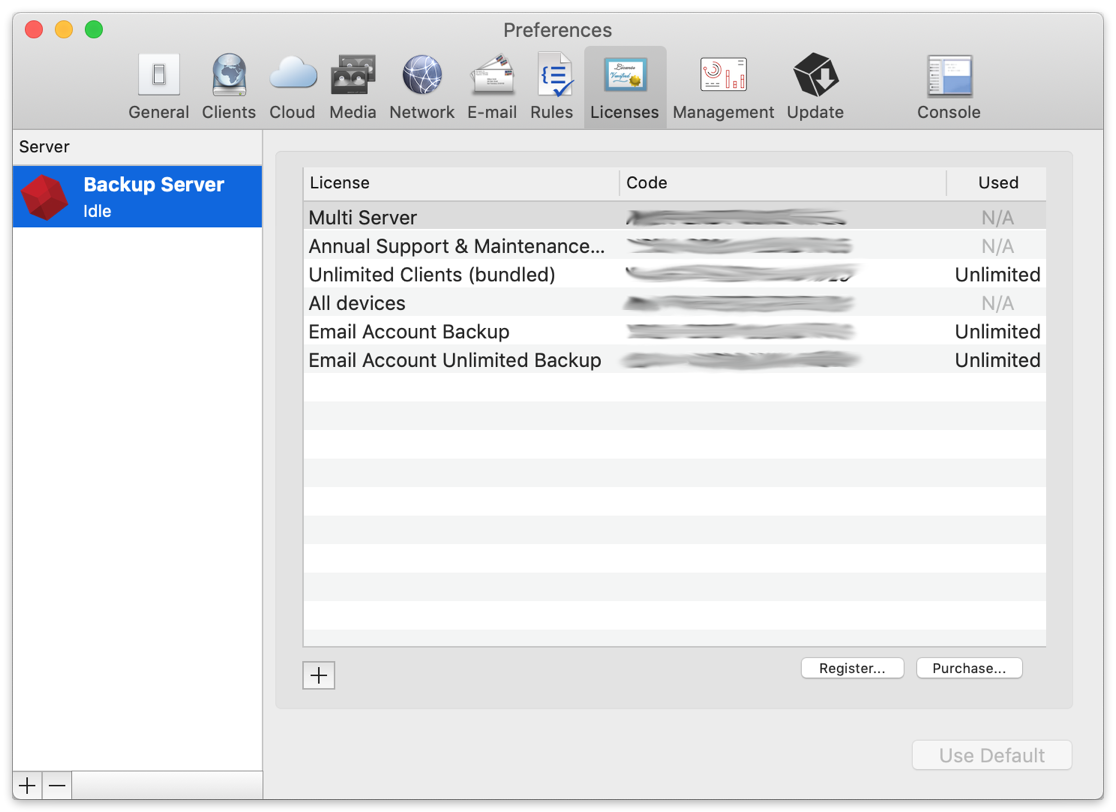
- #Retrospect client linux how to
- #Retrospect client linux install
- #Retrospect client linux password
- #Retrospect client linux plus
Inside there, you will now find a folder called headoffice or whatever you named your bucket, and in there, the file you just uploaded.I need to find out if it would be a good idea to use Linux to run my Retrospect backup software. In my case, 'volume1/docker/minio/tenant config/itmsp' Go to your Synology File Station, and navigate to the shared folder that you chose for storing tenant backups.
#Retrospect client linux plus
It wasn't persistent.Ĭreate a new bucket with that big red plus button in the bottom right corner, and call it what you like, 'headoffice' perhaps.Īnd whilst you're at it, upload a file, just for testing - anything you like. So return to the web address for the minio client, enter the access and secret key (the new one), and you will find that the bucket you created before, if you did, has gone. You will need them to access the cloud storage from Retrospect backup server, or to login to the web client. So, click and highlight the container, and the click 'Details' at the topĬlick 'Log' from the menu at the top, and scroll until you reveal the key's.Ĭopy them, and keep them secure. The instance will have a brand new access key and secret key, as it will every time you restart it. Now, switch the container back on, either with the on/off switch on the right hand side, or using 'Action-Start' Then in the 'Mount path' field, type '/docker/minio/tenantconfig/itmsp' Then in the 'Mount path' field, type '/export/itmsp'Īgain, replace itmsp with the moniker of your tenant, not to mention your own path to store persistent files on the NASĪnd this time Create and select the folder that you have chosen to store the config data for this tenant to, in my case it was 'volume1/docker/minio/tenant config/itmsp' Then, click the container to highlight, and click EditĬlick the Volume menu at the top, and then Add FolderĬreate and select the folder that you have chosen to store the backup data for this tenant to, in my case it was 'volume4/tenant backup/itmsp' Now we need to configure the persistent storageįirst up, click the on/off button to switch the container off. You may skip on, but it's worth running through that command piece by piece to gain some insight into what you have just done…Īnd try to visualise that those paths are not paths on the NAS per se, or its linux OS, but paths the container has in docker.
#Retrospect client linux password
You may be prompted for a password again, so enter the same password for your Synology user account. Sudo docker run -p 51005:51005 -name itmsp -d minio/minio server -address :51005 -config-dir /docker/minio/tenantconfig/itmsp /export/itmsp To fire up your first docker minio instance, paste this command into PuTTY using copy and then the right click of your mouse.īut before you do, you will need to replace the port numbers with the one you want to use for this customer.Īnd you will need to replace the customer moniker with your own customers monikerīut if your tenant is called itmsp, and you're happy on port 51005, paste away as is, and hit enter. Now don't type anything silly at this point. You will at this stage be prompted to 'login as:', so enter your username for your Synology NASĪnd then enter the password when prompted next. Select the checkbox to 'Enable SSH server'Įnter the IP address of your Synology NAS, and click 'Open'


#Retrospect client linux install
I'll want a quota system to make sure things don't get out of hand.Īnd to report on the data usage, so I can charge for it, or not.ĭownload and install PuTTY or your choice of client.Įnable SSH on the Synology (and remember to disable it again afterwards)īy going to 'Control Panel - Applications - Terminal & SNMP' I'll want to choose a particular volume and folder location on the Synology NAS within which to store the data.Īnd I'll want to have a unique bucket and keys for each customer.Īnd I'll want it to be encrypted, so even I can't see the backup data, nor anyone other than the customer. I'll want your customer backup data to be segregated, of course.

To guide my end result, I tried to put myself in the shoes of the service provider, and decided: I hadn't run 'docker' before, but I'd heard of it, and 'containers', and somewhat got the gist. My task appeared quite difficult and not easy to research and learn about online. I was looking from the perspective of an IT service provider, offering their own cloud destination to their customers, for backups, but equally applies in-house.
#Retrospect client linux how to
I had come across the potential of presenting a Synology NAS as an object storage cloud destination using Minio, akin to Amazon S3, and set about to figuring out how to get it running, and how to use it.


 0 kommentar(er)
0 kommentar(er)
